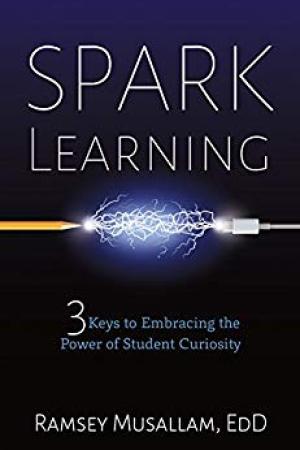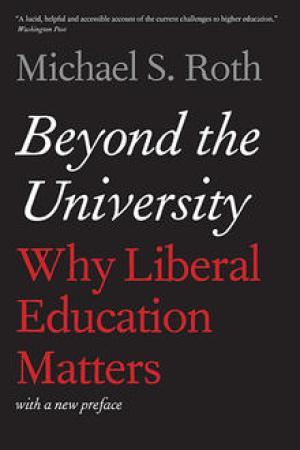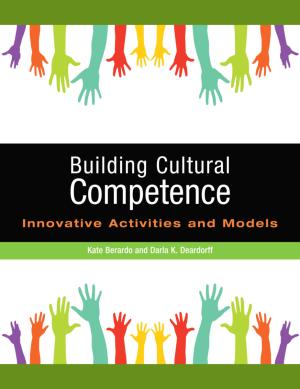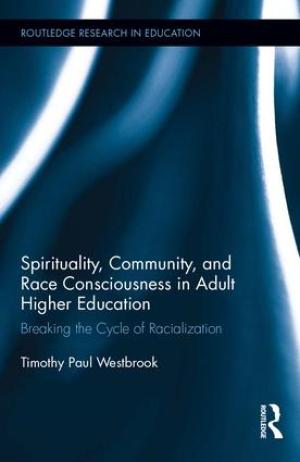Resources

In 2008, Ramsey Musallam was stuck in what he describes as an ineffective rut of "pseudoteaching." Students liked him, but they didn't get the point of his lessons. They did well enough on the tests, but they failed to really understand the material. He wanted more--for them and for himself. Maybe you can relate. For Ramsey, the journey to a better way of teaching began not in the classroom, but on the operating table where he underwent a new, lifesaving heart surgery. His surgeon's confidence, dedication, and curiosity sparked an idea in Ramsey: What if teachers adopted the qualities his surgeon exhibited and were inquisitive, ready to explore, discover, try, and, yes, even fail? What if students could learn to adopt those traits as well? Those questions launched a quest to inspire inquiry and harness its benefits. (From the Publisher)

Contentious debates over the benefits—or drawbacks—of a liberal education are as old as America itself. From Benjamin Franklin to the Internet pundits, critics of higher education have attacked its irrelevance and elitism—often calling for more vocational instruction. Thomas Jefferson, by contrast, believed that nurturing a student’s capacity for lifelong learning was useful for science and commerce while also being essential for democracy. In this provocative contribution to the disputes, university president Michael S. Roth focuses on important moments and seminal thinkers in America’s long-running argument over vocational vs. liberal education. Conflicting streams of thought flow through American intellectual history: W. E. B. DuBois’s humanistic principles of pedagogy for newly emancipated slaves developed in opposition to Booker T. Washington’s educational utilitarianism, for example. Jane Addams’s emphasis on the cultivation of empathy and John Dewey’s calls for education as civic engagement were rejected as impractical by those who aimed to train students for particular economic tasks. Roth explores these arguments (and more), considers the state of higher education today, and concludes with a stirring plea for the kind of education that has, since the founding of the nation, cultivated individual freedom, promulgated civic virtue, and instilled hope for the future. (From the Publisher)

Click Here for Book Review Toxic Ivory Towers seeks to document the professional work experiences of underrepresented minority (URM) faculty in U.S. higher education, and simultaneously address the social and economic inequalities in their life course trajectory. Ruth Enid Zambrana finds that despite the changing demographics of the nation, the percentages of Black and Hispanic faculty have increased only slightly, while the percentages obtaining tenure and earning promotion to full professor have remained relatively stagnant. Toxic Ivory Towers is the first book to take a look at the institutional factors impacting the ability of URM faculty to be successful at their jobs, and to flourish in academia. The book captures not only how various dimensions of identity inequality are expressed in the academy and how these social statuses influence the health and well-being of URM faculty, but also how institutional policies and practices can be used to transform the culture of an institution to increase rates of retention and promotion so URM faculty can thrive. (From the Publisher)

Click Here for Book Review As interest in competency-based education (CBE) continues to grow by leaps and bounds, the need for a practical resource to guide development of high-quality CBE programs led the authors to write this book. Until now, there has been no how-to manual that captures in one place a big picture view of CBE along with the down-to-earth means for building a CBE program. A variety of pressures are driving the growth in CBE, including the need for alternatives to the current model of higher education (with its dismal completion rates); the potential to better manage the iron triangle of costs, access, and quality; the need for graduates to be better prepared for the workforce; and the demands of adult learners for programs with the flexible time and personalized learning that CBE offers. Designed to help institutional leaders become more competent in designing, building, and scaling high-quality competency-based education (CBE) programs, this book provides context, guidelines, and process. The process is based on ten design elements that emerged from research funded by the Gates Foundation, and sponsored by AAC&U, ACE, EDUCAUSE, and the Competency-Based Education Network (C-BEN), with thought partners CAEL and Quality Matters. In short, the book will serve administrators, higher education leaders, faculty, staff, and others who have an interest in CBE by: • Giving context to enable the audience to discover the importance of each design element and to help frame the CBE program (the “why”); • Providing models, checklists, and considerations to determine the “what” component for each design element; • Sharing outlines and templates for the design elements to enable institutions to build quality, relevant, and rigorous CBE programs (the “how”). (From the Publisher)

Click Here for Book Review As it is now backed by an impressive number of courses, academic programs and centers, faculty positions, journals and publications, funding, and professional partnerships, there is no longer a question as to whether the interreligious/interfaith field exists. But its meaning and import are still being debated. How is this field distinct from, yet similar to, other fields, such as religious or theological studies? What are its signature pedagogies and methodologies? What are its motivations and key questions? In other words, what is the shape of interfaith and interreligious studies, and what is its distinct contribution? These questions are the driving force behind this anthology. (From the Publisher)

For HR directors, corporate trainers, college administrators, diversity trainers and study abroad educators, this book provides a cutting-edge framework and an innovative collection of ready-to-use tools and activities to help build cultural competence―from the basics of understanding core concepts of culture to the complex work of negotiating identity and resolving cultural differences. Building Cultural Competence presents the latest work in the intercultural field and provides step-by-step instructions for how to effectively work with the new models, frameworks, and exercises for building learners’ cultural competence. Featuring fresh activities and tools from experienced coaches, trainers, and facilitators from around the globe, this collection of over 50 easy-to-use activities and models has been used successfully worldwide in settings that range from Fortune 500 corporations to the World Bank, non-profits, and universities. Learn updates on classic models like the DIE (Description, Interpretation, Evaluation) framework and the U-Curve model of adjustment. Engage in new exercises to help build intercultural competence, using the practical step-by-step guidance on how to effectively facilitate these activities. Stay relevant and have positive impact with clients, organizations, and students with these well-organized, easy-to-implement, and high impact collection of frameworks, models, and activities. The new, research-based models work for developing cultural competence in any environment, and for designing effective cultural competence courses. Education abroad administrators will be able to use these activities in their pre- departure orientations for students going abroad. Corporate human resource professionals will find these activities invaluable in cultural competence building programs. (From the Publisher)

Drawing on the lived experiences of Black students in adult degree completion programs at predominantly White, Christian institutions in the southern United States, this book presents a model for reimagining adult higher education. Westbrook explores the reasons students enrolled in degree programs, how they experience their predominantly white institutions, and how their experiences affect their lives. Employing Critical Race Theory and Christian theology as frameworks for evaluating the students’ experiences, the author sheds light on the ways African American experiences to inform, critique, and shape Christian adult learning in higher education. (From the Publisher)

Click Here for Book Review Colleges, universities, and seminaries do more than just transfer knowledge to students. They sell themselves as "experiences" that transform young people in unique ways. The conservative evangelical Protestant network of higher education has been no different. In the twentieth century, when higher education sometimes seemed to focus on sports, science, and social excess, conservative evangelical schools offered a compelling alternative. On their campuses, evangelicals debated what it meant to be a creationist, a Christian, a proper American, all within the bounds of Biblical revelation. Instead of encouraging greater personal freedom and deeper pluralist values, conservative evangelical schools thrived by imposing stricter rules on their students and faculty. In Fundamentalist U, Adam Laats shows that these colleges have always been more than just schools; they have been vital intellectual citadels in America's culture wars. These unique institutions have defined what it has meant to be an evangelical and have reshaped the landscape of American higher education. Students at these schools have been expected to learn what it means to be an educated evangelical in a secularizing society. This book asks new questions about that formative process. How have conservative evangelicals hoped to use higher education to instill a uniquely evangelical identity? How has this identity supported the continuing influence of a dissenting body of knowledge? In what ways has it been tied to cultural notions of proper race relations and proper relations between the sexes? And perhaps most important, how have students responded to schools' attempts to cultivate these vital notions about their selves? (From the Publisher)

Teaching and learning become rich and exciting when any classroom makes room for and taps into the resources of diverse backgrounds, contexts, and identities. Also, it’s the right thing to do. When I began teaching online, I knew classroom diversities might increase due to broadening access, but I suspected student diversities could also be less visible due to the individuating and sometimes alienating aspects of technology. Yet in online contexts, foregrounding and integrating room for diversities into teaching and learning is surprisingly easier than you might imagine. Online students have more ways to participate in conversation, experience greater equity from the outset, and often exhibit deeper transparency. How can an online educator make more of diversities in a virtual classroom and tap into their teaching and learning potential? Increased access to classroom diversities was an important draw for me into online education because I teach at a theological school in the far eastern corner of Tennessee. During a 2014 sabbatical, I traveled throughout the United States, Europe, Africa, and Mexico. In many places, vital and thriving ministry was happening without good access to theological education. Many of the people I encountered would not be able to relocate to my school. I began imagining a classroom where a male, Kenyan micro-lender in the Mathare slum district of Nairobi and a Chicago-based, African American woman in urban church planting could have access to theological education and both be in the same room learning together and from one another. The kind of diversities I imagined while traveling now exist in my online contexts, and I aim to embrace them as an asset in theological education. How can online teaching and learning make room for greater diversities? Begin by welcoming student engagement that makes connections to students’ own contexts and backgrounds. Then, incentivize, encourage, and reward these connections across your course design: in opening introductions; discussion posting; student selection of readings, assignments, and projects; and integrative exercises like papers or exams. In all learning tasks and rubrics, objectives should include making resourceful connections to one’s own history, identity, or current contexts. Keep students engaged and invested while simultaneously making learning moments more tangible by emphasizing the contribution of student diversities to learning. Doing so makes diversities a more visible and constructive part of teaching and learning. Students are invited to witness connections happening in the work of their peers and are drawn to do the same. They begin to hear, learn, and feel challenged by their own and others’ diverse perspectives and orientations. Yet, I’ve learned along the way that the contours of online classroom diversities are unpredictable and can unfold in unexpected ways. For example, a white, male American student in an online course entered imagining he had no resources from his own context for theological learning. He named his rural and poor upbringing, and his ministry experience in both conservative and progressive West Virginia congregations as limitations. In response, other students helped him recognize the displacements and pressures that were indeed shaping his theological convictions. Identity in online contexts includes complex and shifting aspects of race, sexuality, trauma, geography, economics, citizenship, displacements, and more. Often, students’ own self-awareness around this multi-layered complexity is shifting in the midst of a course and in response to readings, peer-to-peer engagement, and/or assignments. Hosting spaces where students are invited to name what they are learning from their own contexts and backgrounds and from those of their peers becomes vital. Online learning tends to feel more “democratic” because it allows all learners to enter discussions under similar parameters. But online educators must be aware of persisting inequities. Safety can be heightened by using netiquette guidelines and checking in personally with students when they shift into overly aggressive or suddenly silent postures. Yet, if “democratic” means majority opinions rule, minoritized students will be susceptible to overt and subtle forms of silencing by their peers, while being more exposed and vulnerable in the process. In my experience, subtle forms of deflecting peer voices happens when students champion what they already (think they) know, rather than sharing what they are actively learning. I prioritize and reward only the latter. Surfacing diversities that already exist, and making room for more diversities, enhances learning in the online classroom. It’s risky and needs adaptive and adapting postures, a self-aware and engaged teacher, and rethinking of all elements of course design. I remind students regularly that part of our learning together is about how theological engagement and conversation becomes welcoming and constructive. In that engagement and conversation, every person is a vital and valued contributor in the process of teaching and learning. Making more of diversities enhances every potential for learning, empathy, and relevance.

The pursuit of higher education has become increasingly popular among students of many different backgrounds and cultures. As these students embark on higher learning, it is imperative for educators and universities to be culturally sensitive to their differing individualities. Student Culture and Identity in Higher Education is an essential reference publication including the latest scholarly research on the impact that gender, nationality, and language have on educational systems. Featuring extensive coverage on a broad range of topics and perspectives such as internationalization, intercultural competency, and gender equity, this book is ideally designed for students, researchers, and educators seeking current research on the cultural issues students encounter while seeking higher education. (From the Publisher)
Wabash Center Staff Contact
Sarah Farmer, Ph.D
Associate Director
Wabash Center
farmers@wabash.edu